1. The relationship between the relational mode statement and the sql statement (Question 6 of textbook p70)
① Note the difference between the relational mode statement in the figure and the SQL statement.
② Π is select, σ is select, and the bracket () in spj means from spj.
Example 1:

Example 2:

Example 3: (This example is important!!! Pay attention to the juxtaposed connectives, such as from two tables, with a comma in the middle, such as where two conditions, and in the middle)

Example 4: (This example Important!!! Use except to find the collection of "no"...)

Example 5:
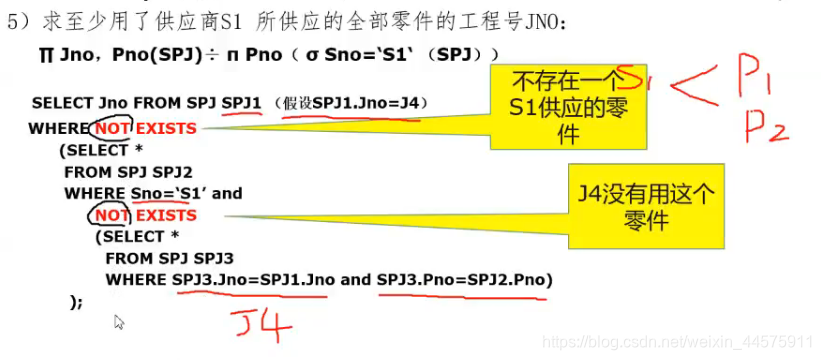
2. Use a comma after select and use and after where
3. Asc ascending order, desc descending order. (If not, the default ascending order)
Example 1: Order by Grade desc
is the descending order of grades
Example 2: Order by Sdept, Grade desc
is the ascending order of the department name, and then the grades in the same department are in descending order (there is no after the department name, so it is the default)
4. Select count (*) means statistics, and the result is a number.
Example 1: select count (distinct Sno) from Sc
The number of students who have taken courses.
Example 2: select count (*) from Student
total number of students
5. select avg (Grade) from Sc where Sno='1'
the average grade of students who took the first course
6.select max (Grade) from Sc where Sno='1'
The highest score of the student who took the first course
7. select sum (Grade) from Sc where Sno='1'
the total score of all students who took the first course
8. group by () is the aggregation
of the same kind. Example 1:
select Cno, Count (Sno)
from Sc
group by Cno,
each course number and corresponding number of courses
9.Having count(*) The star will only treat one row as a number, which means that different columns are counted as the same. This having count has a feeling of if.
(Aggregate functions cannot be used in where)
Example 1:
select Sno
from Sc
group by Sno
having group(*)>3
Student IDs of students who have selected more than three courses
Example 2: Aggregate functions cannot be used in where, so you have to use having avg() and having count to represent

10.insert
Example 1:
insert
into Sc(Sno,Cno)
values('20180101','1');
Example 2 :
Insert
into Sc
values('20180101','1');
11. Union, intersect, except
union is union, intersect is intersection, except is difference

or directly where Con='1' or Con='2'
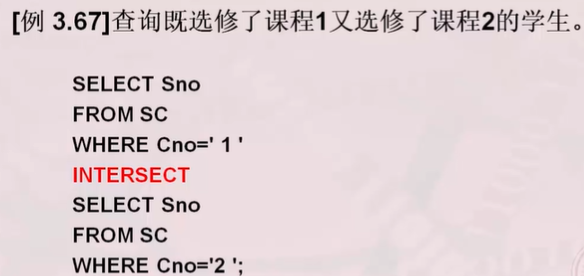
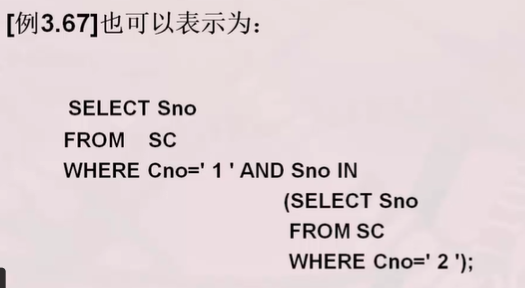
here because it is the same Cno, so you cannot use and directly, but nest
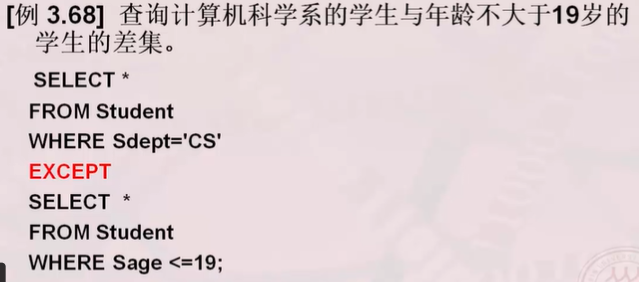

12.update

13.delete


14.create view

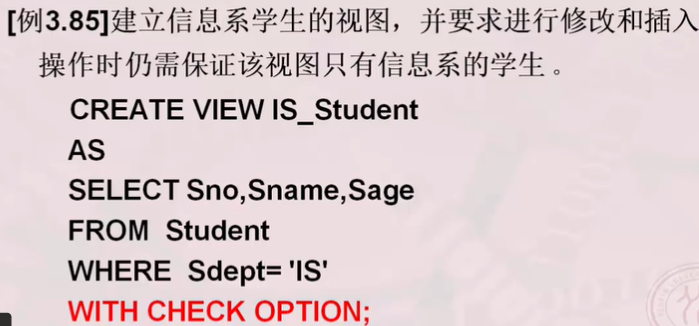
15. Chapter 5 Database Security

